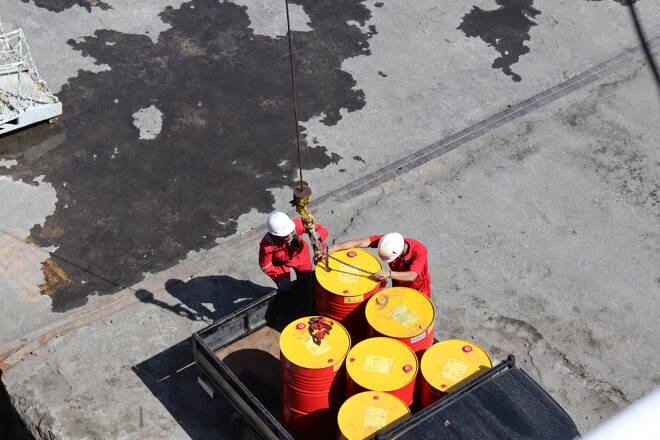Advertisement
Advertisement
Weekly Commodity Review
By:
Fundamentally, it is difficult to see OPEC allowing oil prices to slip significantly lower without simply cutting output levels.
Brent Crude: Monthly
Let’s kick off with a quick look at the monthly chart to put the current moves into better context.
Prices posted near-exponential growth through the mid 1990s before culminating in 2008 at $145.
From there the market has been in a broad range, trading from highs around $120 and periodic lows down to sub $40.
What is striking about this long-term chart is quite how volatile this major global commodity has become. It would have been fair to assume that such a pivotal commodity in global markets could have maintained a less volatile trading range. It would be a mistake to assume that future large moves would be out of character.
Historical performance does not guarantee future profits.
Brent Crude: Daily
Moving to the daily chart we can see that most recent leg higher in more detail. Using the long-term 500-day linear regression channel we can see how price action has been in a strong bullish phase from the lows posted at the start of the decade.
The issue now is that the 50-period trend (red region) is clearly showing a bearish leg lower. Is this simply a leg lower within the longer-term trend or the start of a more major move lower?
Fundamentally, it is difficult to see OPEC allowing oil prices to slip significantly lower without simply cutting output levels. This means without significant macro-economic developments there would seem to be an effective floor on prices. But can this be seen on the charts?
Fibonacci retracements are less useful on the oil market, as historically price seems less affected by this trading logic than in the FX market, for example. What is of interest is that the recent moves just under $90 did seem to find support from the previous resistance from the leg higher in October 2021, with highs of around $87.
So, on a technical basis we would not expect much nervousness to occur within the market unless this key support area is breached. Further, as detailed above, there are strong fundamental arguments this is less likely to occur.
The risk then appears to be skewed to the upside. Goldman Sachs made headlines earlier in the year when it suggested that a brief oil spike up to $125-150 was possible, as geopolitical concerns against a backdrop of already tight supplies could cause a significant squeeze.
Moves back towards the low 90s/high 80s could be seen in the next few weeks, but the buying interest would be very strong on any such move. The major concerns then remain inflation and central bank rates moves, factors which could increase the chances of a global recession.
Clearly this would force prices lower, countering any moves OPEC could make.
This leaves a relatively optimistic medium-term view on oil for the weeks ahead, where only a serious deterioration in the expectations for the global economy would be enough to turn the outlook outright negative.
Historical performance does not guarantee future profits.
This article was brought to you by Alex Neale from OvalX.
Spread bets and CFDs are complex instruments and come with a high risk of losing money rapidly due to leverage. 76.76% of retail investor accounts lose money when spread betting or trading CFDs with OvalX. You should consider whether you understand how spread bets or CFDs work and whether you can afford to take the high risk of losing your money
About the Author
Alex Nealecontributor
Alex has worked in equity CFDs since its inception for retail clients at GNI in 1998. Having since qualified with every major technical analysis qualification, including the Master in Financial Technical Analysis from IFTA when he secured the award for the best paper of the year.
Advertisement
